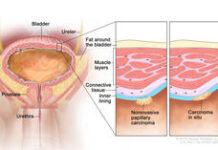A case-control study of 5-year Hodgkin lymphoma survivors found a dose-response association between radiotherapy and colorectal cancer risk, and modification of this association by procarbazine. The association became stronger with increasing procarbazine dose, with highest rates for patients who received both a high radiation dose to the large bowel and a high cumulative procarbazine dose. These findings may enable individualised colorectal cancer risk estimations, identification of high-risk survivors for subsequent screening, and optimisation of treatment strategies. The findings have an important role in addressing the association of the late effects of treatment on the healthy life expectancy of Hodgkin lymphoma survivors. The findings are published by Michael Schaapveld, PhD of the Department of Epidemiology, Netherlands Cancer Institute in Amsterdam, the Netherlands, and colleagues on 2 February 2023 in the JAMA Oncology.
The same group of the authors has previously shown that gastrointestinal malignant tumours are the third most common second cancers in Hodgkin lymphoma survivors, after breast and lung cancer. Compared with the general population, Hodgkin lymphoma survivors have a 2.8 fold higher rate of colorectal cancer, and the rate remains increased for more than 40 years. The authors also previously reported on associations of subdiaphragmatic radiotherapy and procarbazine with increased colorectal cancer rates among Hodgkin lymphoma survivors.
However, those results cannot be used to estimate colorectal cancer rates for patients treated more recently because radiotherapy and chemotherapy doses are now lower. Therefore, an understanding of the dose-response relationship is needed to quantify and estimate the risk of secondary cancers based on individual treatment exposures. These relationships have been demonstrated for secondary cancers of the breast, lung, stomach, pancreas, and oesophagus after treatment for Hodgkin lymphoma, but not for the colon or rectum.
To quantify the colorectal cancer rate associated with radiation dose to the large bowel and cumulative procarbazine dose, the investigators have conducted a nested case-control study using individual Hodgkin lymphoma treatment data. The study examined 5-year Hodgkin lymphoma survivors at 5 hospital centres in the Netherlands. Participants had been diagnosed with Hodgkin lymphoma from 1964 to 2000, when they were 15 to 50 years of age, and were followed for a median of approximately 26 years. Survivors of Hodgkin lymphoma who developed colorectal cancer and survivors who were selected as controls were individually matched in terms of sex, age at Hodgkin lymphoma diagnosis, and date of Hodgkin lymphoma diagnosis. Data were analyzed from July 2021 to October 2022.
Mean radiation doses to the large bowel were estimated by reconstructing individual radiotherapy treatments on representative computed tomography data sets. Excess rate ratios (ERRs) were modelled to evaluate the excess risk associated with each 1 Gy increase in radiation dose, and potential effect modification by procarbazine was explored.
The study population included 316 participants with mean age at Hodgkin lymphoma diagnosis of 33.0 years of whom 221 were men (69.9%); 78 were Hodgkin lymphoma survivors who developed colorectal cancer (cases) and 238 who did not (controls). The median interval between Hodgkin lymphoma and colorectal cancer was 25.7 years. Increased colorectal cancer rates were seen for patients who received subdiaphragmatic radiotherapy (rate ratio [RR] 2.4; 95% confidence interval [CI] 1.4-4.1) and those who received more than 8.4 g/m2 procarbazine (RR 2.5; 95% CI 1.3-5.0).
Overall, colorectal cancer rate increased linearly with mean radiation dose to the whole large bowel and dose to the affected bowel segment. The association between radiation dose and colorectal cancer rate became stronger with increasing procarbazine dose: the ERR per Gy to the whole bowel was 3.5% (95% CI 0.4%-12.6%) for patients who did not receive procarbazine, and increased 1.2 fold (95% CI 1.1-1.3) for each 1 g/m2 increase in procarbazine dose.
The authors underlined that although Hodgkin lymphoma treatments have evolved considerably during the recent decades, with fewer patients receiving subdiaphragmatic radiotherapy or high-dose procarbazine, these findings remain relevant and important for clinicians treating patients for Hodgkin lymphoma in the modern era. This evidence enables individualised estimation of colorectal cancer risk and selection of the optimal treatment strategy for patients who are treated with subdiaphragmatic radiotherapy, e.g. for diffuse large B-cell lymphoma, or with procarbazine, e.g. as part of the BEACOPP regimen.
The findings emphasize the need for clinicians to identify Hodgkin lymphoma survivors previously treated with subdiaphragmatic radiotherapy and procarbazine for whom colorectal cancer screening should be considered. These patients should receive guidance on minimising risk by avoiding associated risk factors, such as smoking, alcohol use, and being overweight.
This study was supported in part by grants from the Dutch Cancer Society, Cancer Research UK, and the University of Oxford (UK).







